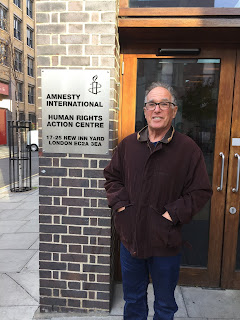Lewis Aptekar: Differences between Developed and Developing Nations
As former professor Lewis Aptekar knows, economic inequality is
an issue that impacts communities and countries around the world – as well as
one at the heart of the distinction between developed and developing nations.
Simply put, economic inequality is the difference between
individuals, populations or both in terms of income, assets and overall wealth
– and is what is generally used to separate countries into these two economic
categories.
 |
| Lewis Aptekar in front of Amnesty International in London at meeting for Street Children Consortium |
A developed nation – as Lewis Aptekar knows – tends to be far
more industrialized and has much higher per capita income levels than a
developing nation. To qualify for the “developed” distinction, a country must
have a per capita income of or higher than $12,000, though most developed
nations reach an average of $38,000. As of 2010, the list of developed nations
included Australia, Canada, Japan, New Zealand, the United States, the Republic
of Korea, countries in Western Europe, Singapore, Taiwan, Israel and
Scandinavia – a total population of just more than 1.3 billion.

Comments
Post a Comment